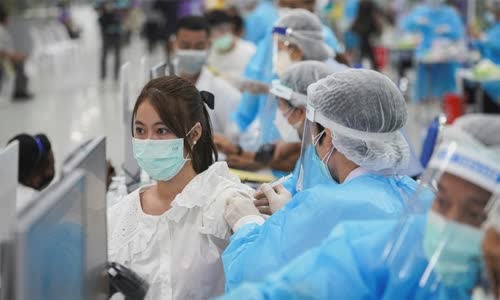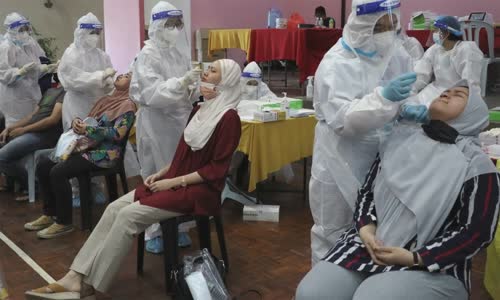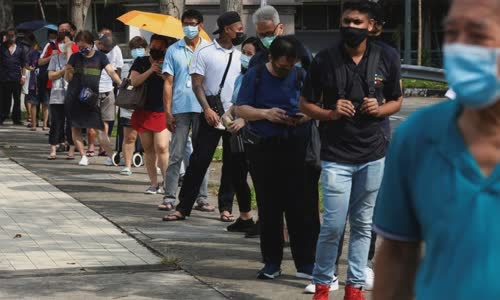After several months of blockade, some Southeast Asian countries began to show the route living with Covid-19 under the economic recovery pressure.
Southeast Asia in the summer faces a serious outbreak of Covid-19 related to Delta strains, making the number of cases increase sharply in July to 8.

Photo: Reuters
Millions of people must be at home, schools are closed, public transport systems stop operations and banned gatherings.
The number of new cases every day in Southeast Asia will decrease gradually, despite being high.
Officials such as Indonesia and Thailand began to seek to recover the economy, especially the tourism industry, by opening boundaries and unloading in public areas, giving up the strategy to erase the Covid-19 and
Thai medical staff injected vaccines at a vaccination point in Bangkok's capital on 24/5.
Jean Garito, running a diving school in Phuket island of Thailand, said the country's small and medium enterprises look forward to opening the border.
Thailand plans to welcome foreign visitors to Bangkok and some other tourist destinations in October, with the hope of being aimed at the tourism industry which accounts for 11% of GDP.
Indonesia has vaccines vaccines for more than 16% of the population and eases some limitations, allowing some public areas to return and factories operate at full capacity.
When about 56% of the population injected a variety of vaccines, Malaysia earlier last last week to re-open the Langkawi tourist island cluster.

Photo: Reuters
Malaysian medical staff samples the test for Cyberjaya city people on June 2.
Southeast Asia quickly reopened, similarly to live with Covid-19 of America, England and some other countries.
Although many countries in the region have not yet announced the same change, they reopened quickly showing that the officials are considering the long-term sustainability of the virus eraser strategy.
However, some experts warning the low immunization rate in Southeast Asia will make the re-opening a more risky area than the West.
Some Western countries noted that the number of new cases increased suddenly after reopening, but the number of patients had to be hospitalized or died at a low level.
The rate of NCOV infection in Southeast Asia is still worrisome.
WHO also offers some other recommendations, including governments that should only be opened if they have controlled the outbreaks and their health systems sufficiently capable of detecting, testing, isolation and treatment of the
However, many Southeast Asian countries have no other options, although the vaccine supply in the region is still low due to a global delay or deficiency.

Photo: Reuters
Waiting for global vaccine needs decreases and supply increases is not the choice of many countries, when the lives and livelihoods of people are seriously interrupted for nearly two years.
Millions of people are struggling with daily livelihoods, Abhishek Rimal, Southeast Asia Emergency Medical Coordinator of the International Red Cross Federation, said.
Singaporeans lined up outside a rapid test center NCOV on September 21.
When blockade orders re-imposed many times, many families face financial difficulties and are increasingly tired of the pandemic, causing the re-opening pressure to increase.
We know the vaccine is the main answer to the pandemic, but we do not have access to the vaccine while having to witness the people experienced a lot of difficulties, Rimal said.
That's why humanitarian organizations such as the Red Cross call for world leaders to provide additional Vaccine Covid-19 to poor countries affected by pandemic in Southeast Asia and South Asia.
Experts say that if the decision is re-opened while waiting for the vaccine, the countries will have to strengthen community health measures, tests and traces of exposure to pandemic response.



 Tammy Creamer
Tammy Creamer







